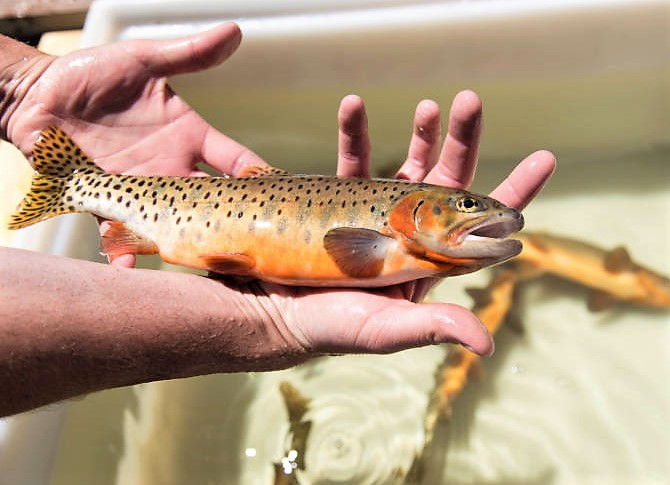The Greenback Trout is one of 14 Cutthroat Trout subspecies. Cutthroats were once found in seas ranging from southern Alaska to central New Mexico. They were the sole native trout in the western United States, and some explorers included them in their writings, based on a report from Colorado Fishing Network.
Considered Colorado's state fish, which had been thought to be almost extinct since the 1930s, has been brought back to life by scientists from Colorado Parks and Wildlife (CPW) after more than a decade of "intense" work. These naturally proliferating fish have been discovered in Herman Gulch in Clear Creek County, Colorado, one of the first areas where the CPW supplied the species.
"The long-term survival and natural reproduction of the greenbacks identified is a big milestone for our recovery process and a huge triumph for preservation," according to a CPW news release. Numerous vulnerable populations were identified in 1957, 1965, and the 1970s, but it was revealed that these were not pure-bred trout but rather a form of subspecies, added to the organization's statement.
BREAKING NEWS: @GovofCO announces @COParksWildlife discovery of greenback cutthroat trout are naturally reproducing in ancestral waters of their native South Platte Drainage. Greenbacks were long considered extinct. Huge win for #wildlife #conservation.https://t.co/XMdCESCklS pic.twitter.com/Y5wiwrdenS
— CPW SE Region (@CPW_SE) September 23, 2022
The Biologists' Recovery Efforts
Greenback Cutthroat Trout has emerged in the ancestral rivers of the South Platte Drainage. The South East Region of Colorado Parks & Wildlife released a few photos and announced them on their social media.
According to officials, the Greenback Cutthroat Trout has begun to thrive as a species in its native South Platte Drainage. Their discovery significantly boosted the goals of wildlife preservation, they remarked on their official Twitter account.
After discovering the species coexisting along Bear Creek in Colorado, biologists proceeded there every spring to collect samples of eggs and trout sperm.
Almost a decade later, that species is still prospering and populating without their assistance. Neighboring, fledgling populations can be found in four other streams, but the Herman Gulch batch is the only one to reach adulthood and start reproducing by itself. According to Josh Nehring, CPW's associate aquatic section manager, the species' proliferation has been "really enormous."
"CPW aquatic scientists in the Southeast Region have worked tremendously hard to conserve and maintain Bear Creek's sole known population of greenbacks," stated Nehring in a report from Newsweek.

Cutthroat Trout swimming back to existence.
Greenback Cutthroat Origin
Based on a statement released by Colorado Fishing Network, the initial distribution of the Greenback subspecies is difficult to determine in part due to its being so closely linked to the Colorado River Cutt; in fact, it is sprung from the Colorado River Cutt. However, the Greenback is currently considered native to the drainages of the South Platte and Arkansas River basins.
As western exploration increased, so did growth. After folks settled in, they were eager to catch some of their favorite fish. Browns arrived in Colorado in 1890, Brookies in 1872, and Rainbows in the 1880s. Cutthroat trout were not developed to compete with larger and/or more aggressive fish. Commercial fishing (catch-and-release in early Colorado) and loss of native habitat were reasons for the Greenback's 'almost' death.
Greenback cutthroats have always had the distinctive scarlet slash under the jaw. These Greenbacks have several black patches over the top of their greenish body and tail. During breeding, their belly develops brilliant crimson red colors (in the spring and early summer). These cutthroats may live for up to five years in minor rivers and up to 10 years in lakes.
RELATED ARTICLE: Fish Waste Benefit Uses Synthesis Process to Turn Then Useless Material Into Carbon-Based Nanomaterial
Check out more news and information on Fish in Science Times.














